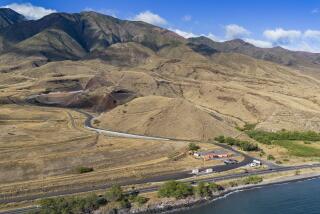How the Legal Web Can Spin Out of Control
- Share via
How does the cleanup of Superfund sites get so entangled in legal maneuvering? The following is a worst-case scenario, but it reflects the way that legal dramas at several Superfund sites have played out.
The Environmental Protection Agency, which administers the Superfund program, frequently uses a pool of federal funds to conduct preliminary cleanup of sites that are found to pose an immediate danger to the health of surrounding populations.
Then, while the EPA begins to investigate the scope and cost of a more permanent cleanup, it attempts to find the “potentially responsible parties”--usually those that have contributed most significantly to the contamination--even if their actions were legal at the time.
It sues them for the cost of cleanup.
The potentially responsible parties--or PRPs, as they are called in Superfund argot--then try to find others who may have contributed to the site’s pollution but who were not named by the EPA as liable for cleanup costs. The PRPs sue them.
At the same time, each of the PRPs sues its property and casualty insurers in hopes that they will cover a share of the cleanup cost. The insurance firms normally argue that the liability preceded their coverage or was not included in it and refuses to pay. The insurers countersue in an effort to establish that they are not liable for the cleanup.
In some cases, the parties socked with cleanup responsibilities by the EPA try a risky and usually costly legal maneuver, suing the federal agency in an effort to make it accept a cheaper method of cleanup.
Meanwhile, small polluters sued for recovery of cleanup costs by big polluters hire attorneys to fight the lawsuits.
More to Read
Sign up for Essential California
The most important California stories and recommendations in your inbox every morning.
You may occasionally receive promotional content from the Los Angeles Times.














